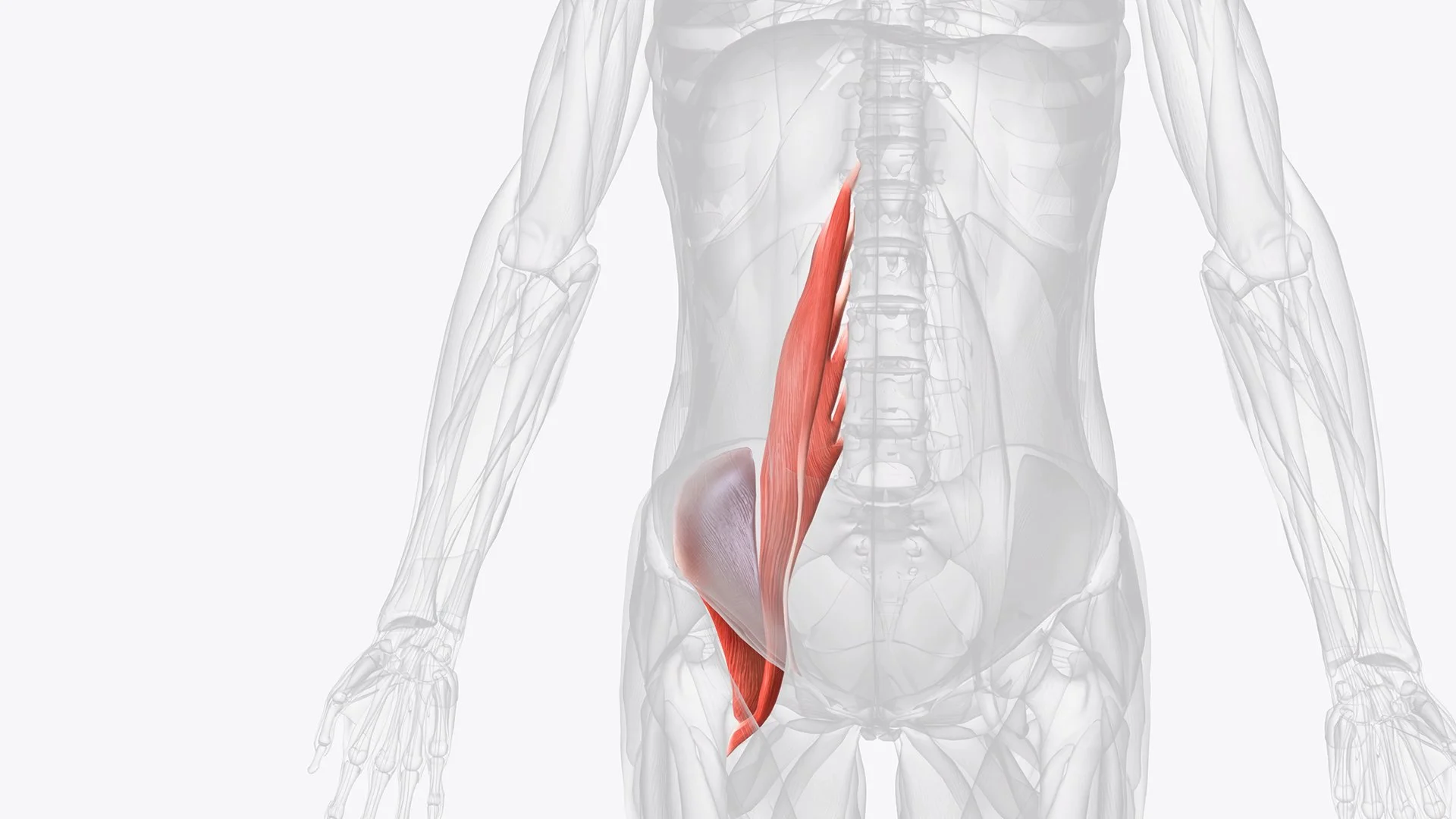How the Psoas Muscle Contributes to Lower Back Pain
Can a Tight or Weak Psoas Muscle Cause Lower Back Pain?
Yes, both a tight and weak psoas muscle can contribute to lower back pain. A tight psoas can pull the lower back into excessive arching (hyperlordosis), increasing pressure on the lumbar spine. A weak psoas, on the other hand, forces other muscles—like the lower back and glutes—to overcompensate, leading to chronic strain, instability, and discomfort.
The Role of the Psoas in Spinal Health
The psoas major is one of the most important muscles connecting your spine to your legs. It runs from the lumbar vertebrae (L1-L5) down to the femur, playing a critical role in hip flexion, posture, and core stability.
Because the psoas influences both the lower back and pelvis, any dysfunction—whether tightness or weakness—can alter spinal alignment and muscle balance, leading to persistent lower back pain. Many people don’t realize their psoas is involved until targeted treatment provides relief.
The psoas muscle, often called the hip flexor, connects your lower spine to your thigh bone. It plays a key role in posture, movement, and lower back support.
Understanding the Psoas Muscle’s Role in Back Pain
The psoas major is one of the deepest core muscles, running from the lower spine to the femur. It is responsible for hip flexion, spinal stability, and posture control. However, prolonged sitting, poor movement patterns, or muscle imbalances can lead to psoas dysfunction, contributing to:
Lower back pain due to excessive spinal compression
Pelvic misalignment, affecting posture and mobility
Tightness that limits hip mobility, leading to compensatory movement patterns
Weakness that reduces core stability, increasing injury risk
How a Weak vs. Tight Psoas Affects the Lower Back
Tightness in the psoas can cause your pelvis to tilt forward, often triggering lower back pain when standing, getting out of bed, or rising from a chair.
A Tight Psoas and Lower Back Pain
When the psoas becomes chronically tight, it pulls the lumbar spine forward, creating excessive curvature (hyperlordosis). This increased arching:
Compresses spinal discs and increases pressure on the facet joints, leading to pain and stiffness.
Shortens the hip flexors, limiting mobility and making standing up straight difficult.
Causes anterior pelvic tilt, altering movement patterns and straining the lower back.
Many individuals with a tight psoas feel discomfort after prolonged standing or when moving from sitting to standing.
A Weak Psoas and Lower Back Pain
A weak psoas lacks the strength and endurance to properly stabilize the lumbar spine and pelvis. This leads to:
Overcompensation by the lower back muscles, increasing strain and tension.
Difficulty maintaining balance and stability when walking or climbing stairs.
Poor posture and movement control, leading to increased risk of injury.
Patients with a weak psoas often report feeling unstable or fatigued during everyday movements.
If you’ve been struggling with chronic lower back pain, the psoas may be the missing piece of your recovery. Call Today 424-543-4336!
Research-Backed Insights on the Psoas and Back Pain
Studies have shown a direct link between psoas tightness and lumbar spine compression, making it a key factor in persistent lower back pain. A study published in the Journal of Physical Therapy Science found that individuals with chronic lower back pain often have reduced psoas flexibility and strength, highlighting the need for targeted intervention. Read the study here.
Another study in the Clinical Biomechanics Journal found that a shortened psoas muscle alters pelvic tilt, increasing stress on the lower spine and sacroiliac joints. View the study.
Morning back pain can be a sign of a tight psoas. When this muscle shortens overnight, standing up from bed can trigger stiffness or sharp discomfort in the lower back.
How Physical Therapy Can Help Strengthen the Psoas
At Victory Performance and Physical Therapy, we assess psoas function and tailor treatments to correct imbalances. This includes:
Stretching techniques to release excessive tightness and restore mobility.
Targeted strengthening exercises to improve psoas activation and endurance.
Postural training to prevent compensatory movement patterns that strain the lower back.
Why Strengthening and Releasing the Psoas Is Key to Long-Term Relief
Unlike temporary fixes, properly balancing and strengthening the psoas can lead to:
✅ Reduced pain frequency and severity
✅ Improved spinal alignment and posture
✅ Lower risk of recurrent back injuries
Take the First Step Toward Lasting Relief
Don’t let a tight or weak psoas keep you in pain. Victory Performance and Physical Therapy in Culver City specializes in identifying and treating muscle imbalances for long-term relief.



